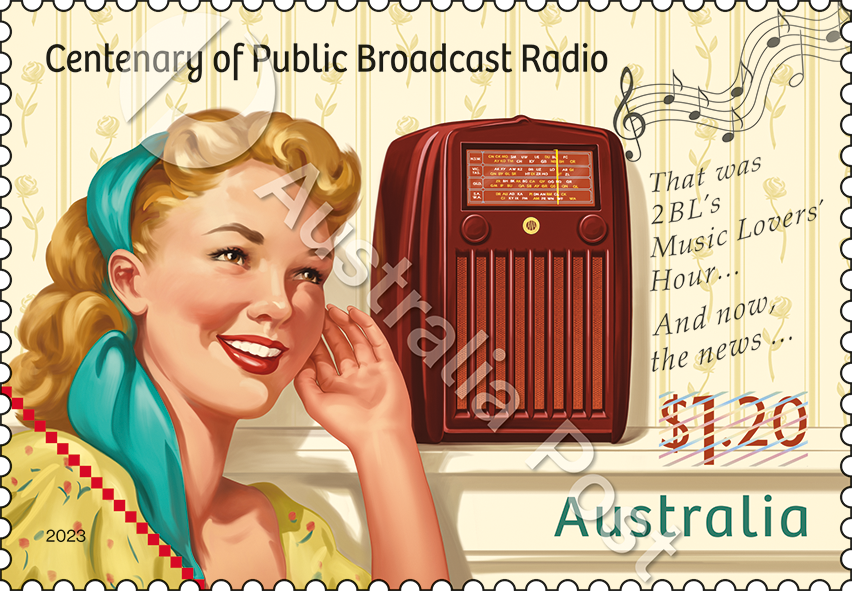
Set of Retro Audio Gummed Stamps
This set of stamps contains the three stamps from the Retro Audio stamp issue.
From the early 1950s to the 1970s, many Australians enjoyed gathering around a radio or record player, as well as a unit that combined them both, the radiogram. These multi-function entertainment units were manufactured in Australia, largely from Australian components and cabinetry, though often with turntables imported from Britain. They ranged in size from 30-centimetre portable units to two-metre-long furniture pieces. A key feature was the auto-changer, and most played four record speeds. Early radiograms contained valve amplifiers, until the mid-1960s, when many Australian models began to move to the smaller, cheaper and more energy-efficient transistorised amplifier. The 1960s also saw the introduction of the “stereophonic” record player (with multichannel sound, as opposed to single-channel mono). This transformed the radiogram into the “stereogram”, and some later models even incorporated a television. The golden age of Australian radio and radiogram manufacture took a downturn in the 1970s, when a change in import laws saw an influx of cheaper imports. In the 1980s, the record was made largely redundant by the compact disc, but vinyl has made a distinct mainstream comeback in recent years.
Stamp photographs by Melissa Webb.
| Issue date | 20 February 2024 |
| Issue withdrawal date | 1 September 2024 |
| Denomination | $1.20 x 3 |
| Stamp design/illustration | Melissa Webb |
| Product design | Jo Muré, Australia Post Design Studio |
| Paper: gummed | Tullis Russell 104gsm Red Phosphor/Blue PVA Stamp Paper |
| Paper - self-adhesive | Domain Securpost/C Print 100 P8P / Non-Phos |
| Printer | RA Printing |
| Printing process | Offset lithography |
| Stamp size(mm) | 37.5mm x 26mm/26mm x 37.5mm |
| Perforations | 13.86 x 14.6/14.6 x 13.86 |
| Sheet layout | Module of 50 (2 x 25 no design) |
| FDI postmark | Altona VIC 3018 |
| FDI withdrawal date | 20 March 2024 |

The popular HMV Caprice was a mid-range stereogram in a low-boy unit, released in 1961. It had a four-valve amplifier, AM radio and BSR fully-automatic turntable.

The 1966 Kriesler Master Multi Sonic was a hi-fidelity, top-of-the-line stereogram, which boasted eight speakers. It included a plug-in microphone, eight-valve amplifier and a Garrard fully-automatic turntable.

The 1963 pale-pink AWA B28 was a portable and battery-operated mono record player, an affordable option for the youth market. While not a high-quality item, it included AWA’s revolutionary, locally-produced transistor amplifier. AWA (Amalgamated Wireless Australasia Ltd) was the first manufacturer in Australia to produce a transistor radio.

This set of stamps contains the three stamps from the Retro Audio stamp issue.

This first day cover presents the three stamps from the Retro Audio stamp issue with official postmark.

This Retro Audio stamp pack contains the three stamps from the stamp issue presented in a nostalgic-design quality folder.

This maxicard set contains the three maxicards from the Retro Audio stamp issue.
This content was produced at the time of the stamp issue release date and will not be updated.

Issue date: 17 October 2023